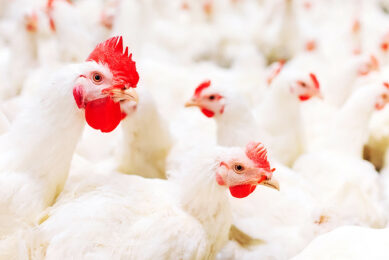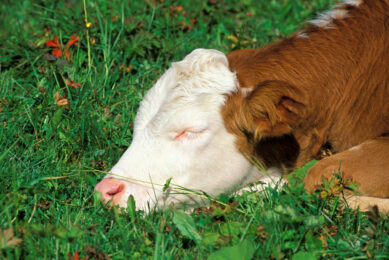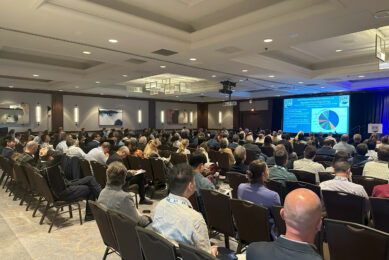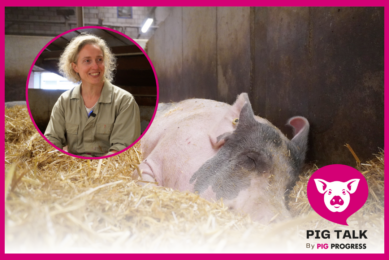Copper is key for piglet performance
![Meeting a piglet s essential nutritional needs is necessary during weaning. [Photo: Novus]](https://www.allaboutfeed.net/app/uploads/2020/12/001_798_rb-image-2658630.jpeg)
Copper is essential to a functional immune system and optimal health. Supplementing nursery pig rations with copper can improve daily gain and feed conversion ratios. Choosing the right type of copper defines its availability in the digestive tract,?minimises excretion into the environment and ?maximises return.
The weaning process is a stressful one for piglets. A new environment, pen mates and feed source can all impact the feed intake and growth potential of young animals. Meeting their essential nutritional needs during this transition is critical to minimise stress and maximise feed efficiency, overall health and performance.
Ensuring proper early nutrition requires careful attention to ration details. Certain elements, although needed only in small amounts, are critical for maintaining young animal health. Copper is one of those elements and is essential for a functional immune system and necessary for a variety of processes in the growing animal.
Recent studies have helped researchers better understand the role of copper in the diet of young pigs. “We’re starting to understand how copper can stimulate a certain gene expression that increases feed intake, which leads to improved gain,” says Dr Yulin Ma, technical services manager for Novus International. “We’ve found that the improvement of dietary fat digestibility in weanling pigs is related to improved intestinal activity of the enzyme lipase when dietary copper is added.”
Improved ADG and FCR
Ma and colleagues conducted a meta-analysis of published literature on copper supplementation in nursery and growing-finishing pig diets in the US, including six studies with varying levels of copper inclusion. Their analysis revealed that supplementing nursery pigs with an organic, chelated copper source (metal methionine hydroxy analogue copper chelate, or MMHAC Cu) significantly improved ADG by 3% and FCR by 2.6% when compared to an inorganic copper sulfate. The incidence of diarrhoea was reduced by 23% in weaners fed MMHAC Cu, and grower-finisher pigs fed the MMHAC supplement experienced an improved immune response and improved nutrient digestibility of a basic corn-soybean diet.
In addition to the antibacterial effects of copper in the gut, the studies also showed that MMHAC Cu improved villus height-to-crypt depth ratio and promotes better nutrient digestion and absorption. Specifically, MMHAC Cu improves the digestibility levels of copper by 42%, dry matter by 8%, crude protein by 9%, phosphorus by 14%, energy by 8% and fat by 10% compared with a basal diet. The biggest advantage of feeding MMHAC Cu was observed in pigs in later nursery phases, including pigs 28 days or older and 7 kg or heavier.
The advantage
of chelated organic trace minerals
Trace mineral supplements can perform differently in the animal’s digestive tract. For example, when inorganic salts are used as a copper source, much of the mineral is often excreted and lost in the faeces due to chemical antagonisms and interactions with other diet components in the digestive tract. That loss results in continued metabolic deficiencies, which limits the performance of the animals. Chelated minerals help overcome these digestive challenges.
In scientific terms, chelation means the trace mineral is bound to a ligand forming at least two coordinated covalent bonds which can be further verified by chemistry techniques such as X-ray crystallography and fourier transform infrared spectroscopy (FTIR). Differently from other organic mineral sources, “this chelate creates a stable complex in the acidic pH of the upper gastrointestinal tract, reduces mineral-ligand breakup, helps reduce losses caused by antagonisms and protects the mineral for efficient delivery to the absorption site and uptake in the small intestine,” explains Dr Ma.
Because of this significant difference, a new feed ingredient category was proposed by Novus International. This category is Metal Methionine Hydroxy Analogue Chelate (MMHAC). “The Association of American Feed Control Officials recognised this new definition, which literally makes Mintrex Cu chelated copper one of a new class of trace minerals,” says Gavin Bowman, executive manager, minerals, for Novus International.
More bioavailability
Over the years, the majority of trials with weaned pigs have demonstrated performance enhancement when dietary copper exceeded 125-150 ppm, particularly during the first eight weeks after the start of copper supplementation. The challenge has been to increase performance and avoid excess copper excretion, which poses a significant environmental hazard and is typically caused by the relatively poor availability of copper from inorganic sources.
The key to reducing mineral excretion is to optimise mineral uptake by improving its availability. “That can be accomplished by decreasing the interaction of minerals with various dietary and digestive components such as phytate and fibre, and by decreasing the opportunity for mineral interactions in the gastrointestinal tract,” explains Bowman.
Bowman states that in vitro tests with the copper MMHAC feed supplement “clearly show enhanced stability when compared with other mineral sources”. He adds that trials show that 50 ppm of copper from the copper MMHAC supplement “yields similar growth and feed efficiency improvements to 250 ppm of copper from CuSO4“. Figure 1 illustrates this.

Supplementation strategy
Because MMHAC chelated copper is better absorbed by animals than inorganic trace mineral supplements, a producer can feed less mineral while still maintaining feed efficiency. “By substituting inorganic copper sources with organic MMHAC in post-weaning diets, a grower can maintain performance levels, while decreasing the level of copper excretion and lowering the cost of copper supplementation,” says Bowman.
A recent feeding trial provides further evidence. The performance of 924 newly weaned pigs was compared; they received copper supplementation from inorganic sources, being copper sulfate (CuSO4) and tribasic copper chloride (TBCC); or from an organic source (MMHAC), at two rates. The animals were fed at equal copper levels the first 21 days post-weaning. The copper in the control group was solely derived from the ingredients and the basal level of copper supplied in the trace mineral mix (Table 1).
In general, growth rates for the first seven days post-weaning were improved with all forms of Cu supplementation, although feed intake appeared to be numerically improved with the higher rate of organic copper (Table 2). During the first 21 days post-weaning, pigs receiving the copper supplement gained 0.6-0.9 kg (1.3-1.9 lbs) more weight than those on the basal diet.
Feed conversion improvements with copper supplementation ranged from 2.9% for pigs fed TBCC to 6.6% for pigs receiving copper sulfate to 13.5% for pigs fed the MMHAC copper supplement (Table 3). Study results also demonstrated improved accumulation of copper in the livers of pigs supplemented with the MMHAC organic copper form vs. copper sulfate.
“More efficient absorption of organic chelated trace minerals means less mineral is excreted by the animal,” says Bowman. “That’s not just better for the environment, it’s better for the producer’s bottom line.”











